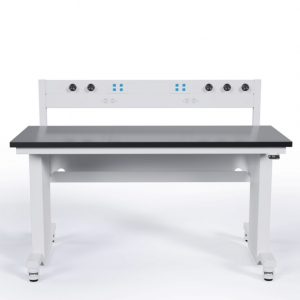Face Transplants Could Become More Mainstream as Surgical Techniques Improve
Groundbreaking advances in medical transplant technology are now paving the way for one of the most complex and challenging procedures in cosmetic surgery.
Before toddlers gain the ability to verbalize or understand spoken language, they rely on a silent way of communicating – by looking into the parents’ faces.
Recognizing facial expressions is so central to human interaction that our brains often unselfconsciously project human features onto inanimate objects.
Psychologically savvy car designers take advantage of this innate human behavior by creating automobile designs that resemble a face, with two headlights for eyes and a grill and bumper set that creates a friendly smile – or, in some cases, an angry grimace.
Patients with severely disfigured faces often become virtual societal outcasts, leading to cases of clinical depression.
A cruel downside to our innate human need to interpret faces is the plight of those with severe disfigurement.
People with disfigured faces are often largely rejected by large swaths of society who find their condition difficult to accept.
This leaves a fairly significant cohort of patients with facial disfigurement – including those with congenital defects, burns, gunshots, knife attacks, chemical attacks, car accidents, or even instances of self-harm – at risk for clinical depression due to a lack of acceptance by society at large.
The First Successful Face Transplant – One of the Most Challenging Cosmetic Reconstruction Surgeries
Transplanting a human face is probably the most challenging cosmetic surgery there is.
Imagine the complexity of successfully harvesting a doner face and reattaching up to twelve major nerve bundles, as well as muscular systems that control the jaw, lips, tongue, and throat, the nose and its internal nares and nasal passages, as well as the structures surrounding the eye sockets, including eyelids and eyebrows.
In many cases, a successful facial transplant may also require transplanting bone structures as well to properly support the face.
The first successful face transplant (known as Vascularized composite tissue allotransplantation or VCA in the surgical community) took place in France in 2005.
Although technically a “partial” face transplant, it is considered a landmark achievement, establishing face transplants (FT) as a potentially superior approach in comparison to conventional piecemeal reconstructive surgeries that rely on tissue harvested from the patients themselves (such as skin or bone).
Recent Advances in Facial Transplant Surgeries are Pointing the Way toward Making FT/VCA a More Mainstream Procedure for the Severely Disfigured
Since the first successful facial transplant surgery in France in 2005, surgical teams around the world – in the US and Canada, China, France, Italy, and Turkey – have performed 50 such surgeries to date.
These procedures are long and intensive – one recent surgery at the Mayo Clinic required 50 hours in the surgery theater. Practitioners must also familiarize themselves with the broad array of connective tissue, nerve bundles, and skin graft techniques before attempting their first operation – this often involves lengthy study of and practice on medical cadaver “patients” to develop proper techniques.
According to recent research published in the journal JAMA Surgery, the long-term prognosis for facial transplant patients compares favorably with other major transplant surgeries, with 85% of facial transplant patients still living after 5 years and 74% after 10 years.
The researchers noted that the most recent patients had a statistically higher 5- and 10-year survival rate, which could indicate that the surgical techniques and procedures are improving over time, leading to better long-term outcomes.
Fully Integrated Material Handling Station
Read more...
Julia Solodovnikova
Formaspace
+1 800-251-1505
email us here
Visit us on social media:
LinkedIn
Facebook
X
Legal Disclaimer:
EIN Presswire provides this news content "as is" without warranty of any kind. We do not accept any responsibility or liability for the accuracy, content, images, videos, licenses, completeness, legality, or reliability of the information contained in this article. If you have any complaints or copyright issues related to this article, kindly contact the author above.
Surfing the Network Wave: MIRhosting Launches Next-Gen 400G ZR+ DWDM Backbone
Aerogel Battery Insulation Market to Expand at 28.3% CAGR, Reaching US$ 4,543 Million by 2035 | Fact.MR Report
Westbrooke Associates Reviews: Entrepreneur Bradley Yarrington Set to Shake Up the Drinks Industry Again
Kalendarium
Więcej ważnych informacji
 Jedynka Newserii
Jedynka Newserii

 Jedynka Newserii
Jedynka Newserii

Edukacja

Coraz więcej Polaków widzi korzyści płynące z obecności w UE. Co ósmy wciąż jednak nie potrafi ich wskazać
Członkostwo w UE cieszy się wśród Europejczyków rekordowo wysokim poparciem – wynika z tegorocznego Eurobarometru. Korzyści dla swojego kraju dostrzega 74 proc. obywateli Unii – to odsetek najlepszy od początku badań w 1983 roku. A w Polsce jest on jeszcze wyższy. Doceniamy przede wszystkim wkład UE w bezpieczeństwo, nowe możliwości zawodowe i rozwój gospodarczy kraju. Po 21 latach naszej obecności w UE wciąż jednak potrzebna jest europejska edukacja.
Polityka
Zmiany w obowiązku magazynowania gazu mogą obniżyć ceny surowca. To pomoże się przygotować do sezonu zimowego

Elastyczność bez zagrożenia dla bezpieczeństwa energetycznego – tak nową propozycję przepisów dotyczących uzupełniania zapasów gazu przed sezonem zimowym określają jej inicjatorzy z Parlamentu Europejskiego. Europosłowie proponują nieznaczne zmniejszenie wymaganego poziomu zapełnienia magazynów i rozciągnięcie w czasie terminu, w którym trzeba spełnić ten obowiązek. Jak podkreśla Borys Budka, ma to zapobiec spekulacjom na rynku gazu i tym samym pomóc obniżyć ceny surowca.
Konsument
Możliwość zakupu online może zachęcić kolejne grupy Polaków do ubezpieczeń zdrowotnych. Dziś korzysta z nich już prawie 5,5 mln osób

Polska jest jednym z liderów Europy w obszarze cyfryzacji sektora usług medycznych. Świadczą o tym m.in. popularność elektronicznych narzędzi zapewniających dostęp do danych zdrowotnych, e-recept czy wirtualna diagnostyka. Polacy są też otwarci na innowacje w zakresie ubezpieczeń zdrowotnych, z których korzysta już blisko 5,5 mln osób. Za pomocą nowej cyfrowej platformy Medicover chce zachęcić klientów do samodzielnej konfiguracji i zakupu polis online.
Partner serwisu
Szkolenia

Akademia Newserii
Akademia Newserii to projekt, w ramach którego najlepsi polscy dziennikarze biznesowi, giełdowi oraz lifestylowi, a także szkoleniowcy z wieloletnim doświadczeniem dzielą się swoją wiedzą nt. pracy z mediami.










.gif)

 |
| |
| |
|